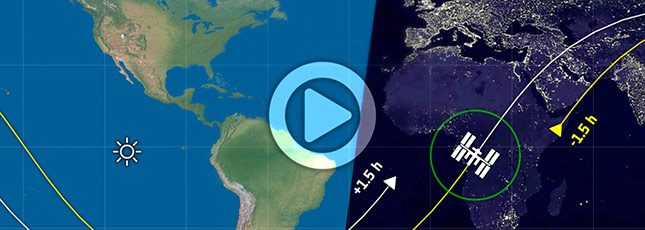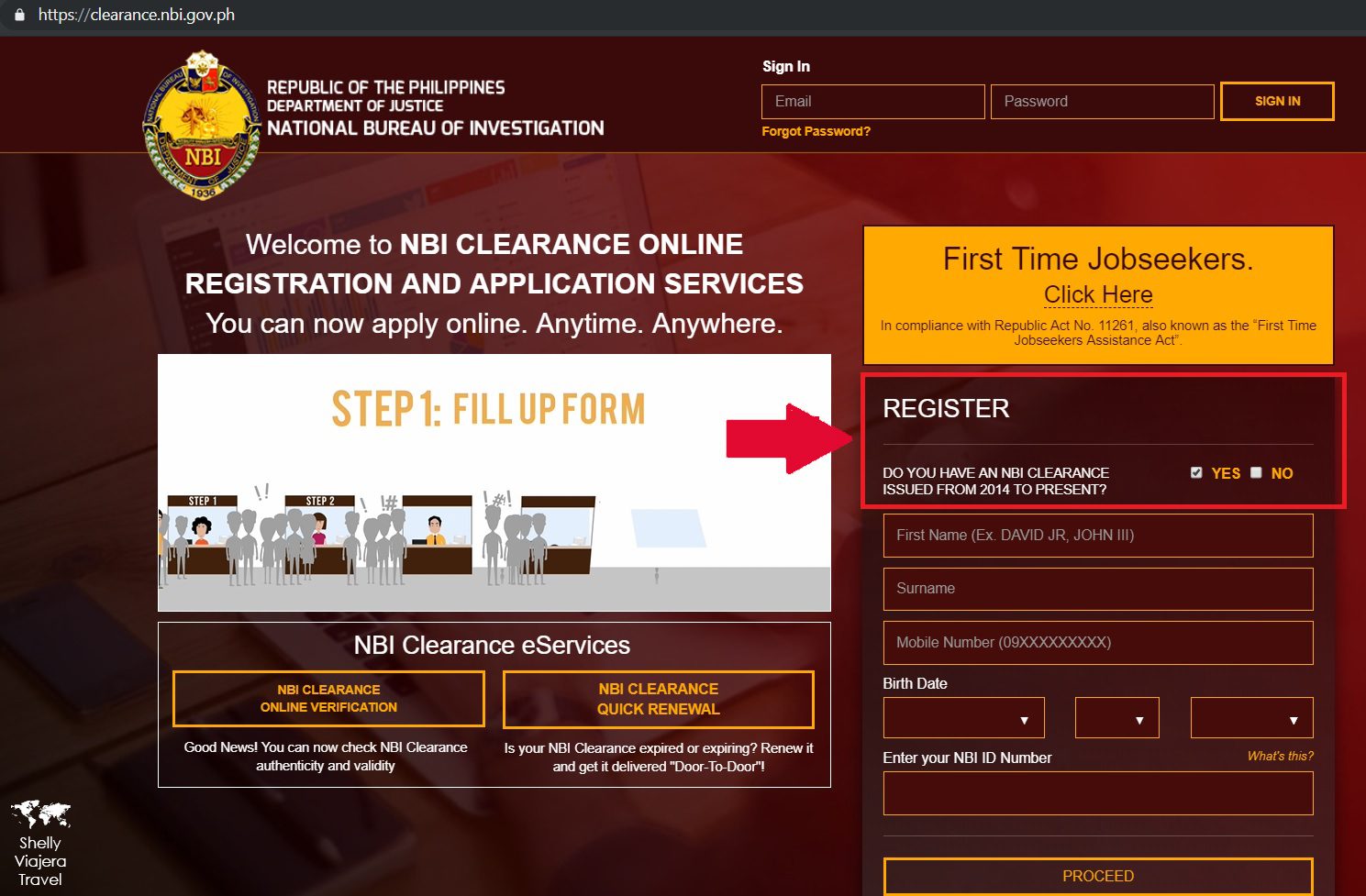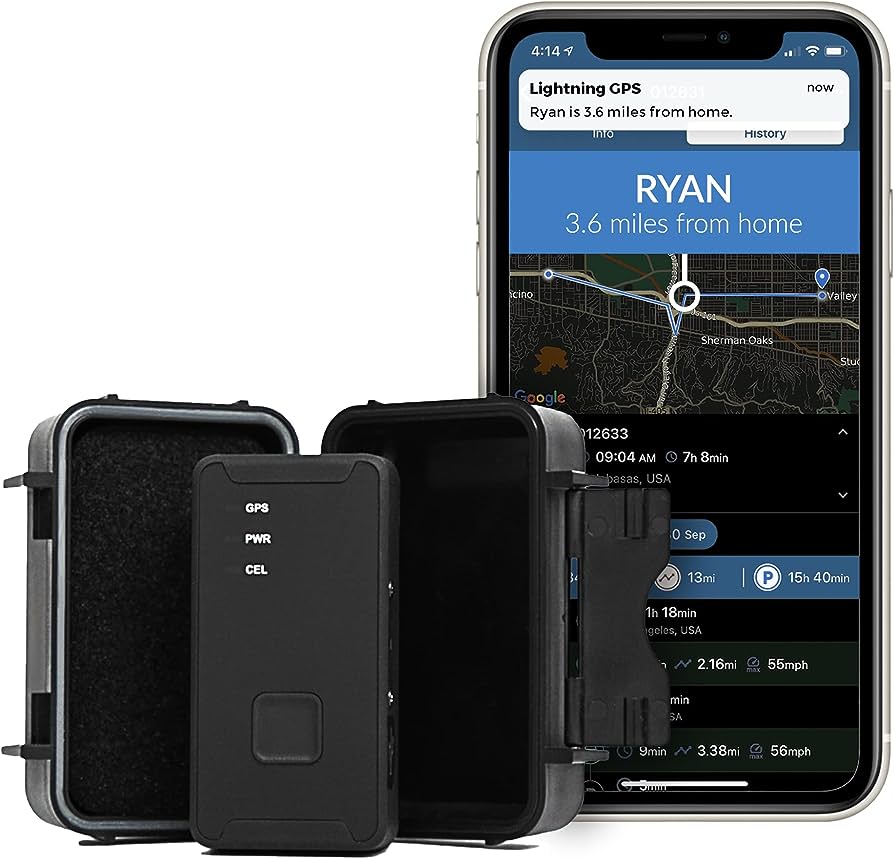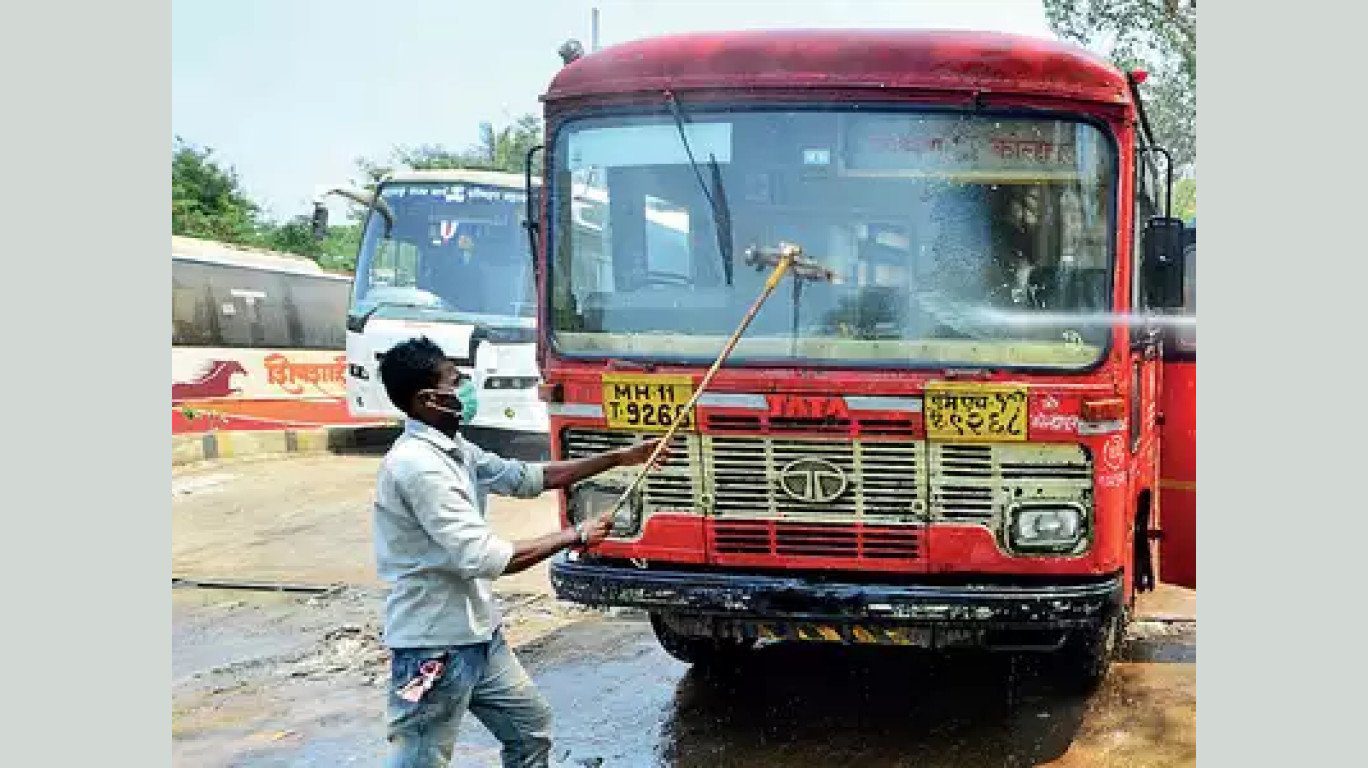To track the Space Station, utilize online tracking tools or mobile apps that provide real-time location updates. These tools use data from NASA to monitor the station’s position in the sky, enabling users to track its movements across the Earth.
Are you eager to follow the Space Station’s journey across the night sky? Tracking the Space Station has never been easier thanks to online tracking tools and mobile apps. By leveraging data from NASA, these tools offer real-time updates on the station’s location, making it simple to monitor its movements.
Whether you’re an astronomy enthusiast or simply fascinated by space exploration, tracking the Space Station adds another layer of excitement to your stargazing adventures. We will explore various methods to track the Space Station, providing you with all the information you need to follow its path across the Earth. So, let’s dive in and start tracking the Space Station today!
The Basics Of Space Station Tracking
Learn how to track the space station with these essential tips. Discover the basics of space station tracking and stay up-to-date with its movements in the sky.
Tracking the International Space Station (ISS) is a fascinating endeavor that allows us to follow the station’s movements and locations as it orbits above us in space. Understanding the basics of space station tracking can help us appreciate the incredible capabilities of modern technology and the importance of tracking the ISS.
In this section, we will explore the orbit of the space station, factors affecting its tracking, and the significance of monitoring its movements.
Understanding The Orbit Of The Space Station
To comprehend space station tracking, it is essential to have a grasp of the ISS’s orbit. Consider the following key points:
- The ISS orbits the Earth at an average altitude of 400 kilometers (250 miles).
- It completes a full orbit roughly every 90 minutes, traveling at a speed of approximately 28,000 kilometers per hour (17,500 miles per hour).
- The inclination of the ISS’s orbit, which refers to the angle at which it travels relative to the Earth’s equator, is approximately 51.6 degrees.
- As the Earth rotates beneath it, the ISS covers different areas, allowing for diverse tracking opportunities around the globe.
Factors Affecting Space Station Tracking
Multiple factors influence the tracking of the space station. Here are some essential considerations:
- Geographical Location: Your location on Earth determines the visibility and accessibility of the ISS during its orbit. It may not always be visible from every point on the planet due to factors such as latitude, city lights, weather conditions, and obstructions.
- Sunlight and Darkness: The ISS is best observed during dawn or dusk when sunlight reflects off its solar arrays, making it appear brighter against the dark sky.
- Viewing Opportunities: The availability of tracking opportunities depends on the station’s orbital path and your position on Earth. Websites, apps, and satellite tracking services provide precise information on when the ISS will pass over your location for optimal viewing or tracking.
- Astronomical Events: Special celestial events, such as solar eclipses, transits of Mercury or Venus, and the appearance of comet flybys, may coincide with potential tracking chances. These events create unique opportunities to observe the space station alongside other remarkable occurrences in the sky.
Importance Of Tracking The Space Station
Tracking the space station serves various purposes, including:
- Education and Inspiration: Observing the ISS fosters curiosity and inspires awe in people of all ages, encouraging an interest in space exploration and technology.
- Scientific Research: Tracking allows scientists to analyze the space station’s precise position and record data on its behavior, aiding ongoing research in various fields.
- Safety of Astronauts: Monitoring the orbit and movements of the ISS is essential for ensuring the safety and well-being of the astronauts onboard. Tracking helps identify potential collision risks with space debris and allows for necessary adjustments to the station’s trajectory.
- International Collaboration: Tracking the ISS exemplifies global cooperation in space exploration. Sharing tracking data and observations among international partners promotes unity and fosters scientific advancements.
Now that we have explored the basics of space station tracking, we can fully appreciate the technical and scientific aspects involved. Stay tuned to the next section as we delve deeper into the technologies and methods used to track the International Space Station.
Online Tools For Tracking The Space Station
Discover a range of online tools that allow you to easily track the Space Station’s location. Stay updated and explore the wonders of space with these helpful tracking resources.
Tracking the International Space Station (ISS) can be an exciting and educational experience. Thanks to online tools and mobile apps dedicated to this purpose, staying updated with the location and trajectory of the Space Station has never been easier. Whether you are an astronomy enthusiast or simply fascinated by space exploration, these resources allow you to track the ISS in real-time and gain valuable insights about its missions and crew.
Popular Websites For Tracking The Space Station:
- Website 1: This popular website provides a user-friendly interface for tracking the ISS. It offers real-time data and information about the Space Station, including its current location, altitude, and speed. The website also provides details about upcoming passes over specific locations, allowing users to plan and witness the ISS as it passes overhead.
- Website 2: Another highly regarded website for tracking the ISS is known for its comprehensive and accurate data. It provides a visual representation of the Space Station’s current position on a world map, allowing users to see its exact location relative to their own. Additionally, the website offers a wealth of information about the ISS, including its purpose, history, and scientific experiments conducted onboard.
Mobile Apps For Tracking The Space Station:
- App 1: This mobile app offers a user-friendly interface with real-time tracking capabilities. It allows users to view the current position of the ISS on a map and provides detailed information about the Space Station, its crew, and missions. The app also features notifications for upcoming passes, ensuring that users never miss an opportunity to witness the ISS as it traverses the sky.
- App 2: Designed for space enthusiasts and novices alike, this mobile app offers a range of features for tracking the ISS. It provides real-time updates on the Space Station’s location, trajectory, and speed. In addition to tracking, the app offers educational content about the missions and experiments conducted onboard the ISS, providing a comprehensive understanding of the International Space Station’s importance and purpose.
Benefits Of Using Online Tools For Space Station Tracking:
- Stay informed: Online tools and mobile apps for tracking the ISS allow you to stay up-to-date with the latest information about the Space Station. From its current position to upcoming passes, these resources ensure that you never miss an opportunity to witness the ISS in action.
- Educational experience: Tracking the ISS offers a unique opportunity to learn about space exploration and the scientific advancements being made onboard the Space Station. Online tools and mobile apps provide insights into the missions, experiments, and daily life of the astronauts, fostering a deeper understanding of the importance of space research.
- Plan your viewing: With the help of these tools, you can plan your viewing of the ISS passes over your location. By knowing the exact time and direction of the Space Station’s appearance in the sky, you can step outside and witness this incredible sight without missing a beat.
- Connect with the space community: Online tools and mobile apps often feature interactive elements that allow users to connect with like-minded individuals who share a passion for space exploration. Whether through comment sections or dedicated forums, engaging with the space community can enhance your space tracking experience and foster valuable connections.
Tracking the International Space Station has never been more accessible or exciting. Online tools and mobile apps provide real-time updates, educational content, and opportunities to connect with others interested in space exploration. Start tracking the ISS today and embark on a journey that will inspire and enlighten you about the wonders of outer space.
Equipment For Tracking The Space Station
Discover the essential equipment needed to track the Space Station and explore how to effectively monitor its movement in space. Gain insights on the tools and techniques used for precise tracking and navigation.
Telescopes For Space Station Tracking
Telescopes are powerful tools that can help you track the International Space Station (ISS) as it orbits the Earth. With the right telescope, you can witness the wonder of space right from your backyard. Here are some key points to consider when choosing a telescope for space station tracking:
- Refractor Telescopes: These telescopes use lenses to gather and focus light, providing crisp and clear images of the space station.
- Reflector Telescopes: Using mirrors instead of lenses, reflector telescopes are excellent for tracking fast-moving objects like the ISS. They offer great light-gathering capabilities.
- Cassegrain Telescopes: Compact and versatile, Cassegrain telescopes combine both lenses and mirrors to give you bright and sharp views of the space station.
- Aperture Size: The size of the telescope’s aperture determines its light-gathering ability. Opt for a telescope with a larger aperture (around 6-8 inches) for better tracking of the ISS.
- Mount Type: Equatorial or motorized alt-azimuth mounts are ideal for space station tracking. They offer smooth movement and precise tracking features.
- Portability: Consider the weight and size of the telescope, especially if you plan to take it for stargazing adventures away from home.
Binoculars For Space Station Tracking
Binoculars provide a more portable and convenient option for tracking the International Space Station. Here are the key points to consider when choosing binoculars for space station tracking:
- Magnification and Objective Lens: Binoculars are specified by their magnification and objective lens diameter. A magnification of 7x to 10x with an objective lens size of 40mm or more is recommended for space station tracking.
- Wide Field of View: Look for binoculars with a wide field of view to easily track the fast-moving ISS across the sky.
- Image Stability: Opt for binoculars with image stabilization technology to minimize hand-shake and ensure clear views of the space station.
- Lightweight and Compact: Consider the weight and size of the binoculars for convenience during outdoor use. Compact binoculars are easier to carry around.
- Waterproof and Fogproof: Look for binoculars with these features to ensure they can withstand different weather conditions.
Cameras For Space Station Photography
Capturing clear and stunning images of the space station is an exciting endeavor. Here are some recommendations for cameras suitable for space station photography:
- DSLR Cameras: These are popular among astrophotographers, offering excellent image quality, interchangeable lenses, and manual controls for precise settings.
- Mirrorless Cameras: Mirrorless cameras are compact and lightweight, making them a great choice for space station photography on the go. They also provide advanced features and high-resolution image sensors.
- Point-and-Shoot Cameras: Compact and easy to use, point-and-shoot cameras are a more affordable option for capturing space station images. Look for models with good low-light performance and optical zoom capabilities.
- Astrophotography Accessories: Consider investing in additional accessories like a tripod, remote shutter release, and a telephoto lens for enhanced space station photography.
- Long Exposure Techniques: To capture clear images of the space station, use longer exposure times to allow enough light to reach the camera’s sensor. Experiment with different exposure settings to achieve the desired results.
Remember, whether you choose a telescope, binoculars, or a camera, tracking the International Space Station can be a rewarding experience. Enjoy exploring the wonders of space right from your own backyard!
Best Practices For Space Station Tracking
Learn the best practices for tracking the space station with these useful tips. Discover how to efficiently track and monitor the movements of the space station for a deeper understanding of its activities.
Tracking the space station can be a fascinating endeavor, allowing you to witness the magnificent spectacle of human technology in space. To make the most of your tracking sessions, it’s important to follow some best practices. In this section, we’ll explore the ideal conditions for tracking the space station, how to prepare for tracking sessions, choosing the best location, checking weather conditions, the technique for spotting the space station, and identifying visible passes.
Ideal Conditions For Tracking The Space Station
- Clear skies are essential for optimal space station tracking.
- The absence of light pollution can significantly enhance visibility.
- Tracking during nighttime or predawn hours is recommended when the space station is illuminated.
Preparing For Tracking Sessions
Before embarking on your tracking session, it’s crucial to make necessary preparations. Here are some tips:
- Familiarize yourself with the space station’s trajectory and pass times through reliable tracking resources.
- Ensure you have a reliable and accurate clock or timekeeping device with you.
- Prepare your equipment, including binoculars, a telescope, or a camera with a telephoto lens, to aid in spotting and capturing images of the space station.
Choosing The Best Location
Picking the right location is crucial for a successful space station tracking session. Consider the following factors:
- Find an open area with an unobstructed view of the sky to maximize visibility.
- Avoid locations near tall buildings or trees that can block your view of the space station’s path.
- Higher elevations can provide better visibility due to reduced atmospheric interference.
Checking Weather Conditions
Keeping an eye on the weather is essential to ensure clear viewing conditions. Remember these tips:
- Check the weather forecast before your tracking session, paying attention to cloud cover and precipitation.
- Avoid tracking during cloudy or rainy conditions, as it can obstruct visibility of the space station.
Technique For Spotting The Space Station
Spotting the space station amidst the vastness of the sky can be a thrilling experience. Follow these steps to improve your chances:
- Look for a bright, star-like object moving steadily across the sky.
- The space station can appear as bright as Venus or even outshine other stars.
- Keep an eye out for its continuous motion, distinguishable from the twinkling of stars and airplanes.
Identifying Visible Passes
To identify visible passes, consider the following:
- Use online tracking tools or mobile apps to determine the space station’s visible passes from your location.
- Look for information about the duration and direction of each pass.
- Take note of the space station’s highest point in the sky during a pass, known as the maximum elevation.
Timing And Tracking The Path
To track the space station accurately, follow these guidelines:
- Calculate the precise timing of visible passes based on the information provided by tracking resources.
- Use your clock or timekeeping device to synchronize your observation with the predicted pass time.
- Follow the space station’s path across the sky, noting any changes in brightness or speed.
By following these best practices, you’ll be well-equipped to track the space station successfully. Remember to be patient, stay observant, and enjoy the awe-inspiring sight of humanity’s presence in the cosmos.
Advanced Space Station Tracking Techniques
Discover the cutting-edge techniques for tracking space stations with advanced space station tracking methods. Master the art of space station tracking with ease.
Radio Tracking Of The Space Station
- Radio tracking is an advanced technique used to monitor the movement of the Space Station in real-time.
- This method requires specialized equipment and a proper setup to receive and decode signals from the Space Station.
- The collected data can provide valuable information about the position, velocity, and trajectory of the Space Station.
- The equipment setup involves using an antenna to receive radio signals, a receiver to process the signals, and a computer to analyze the data.
- To ensure accurate tracking, it is essential to calibrate the equipment and set the correct frequency and modulation mode.
Collecting And Interpreting Data
- Once the radio tracking equipment is properly set up, it can start collecting data from the Space Station.
- The received signals contain information about the Space Station’s orbit, altitude, and position over time.
- Data can be collected in real-time or recorded for later analysis.
- Interpreting the data involves analyzing the received signals and extracting relevant information.
- Various parameters can be measured, such as Doppler shift and signal strength, to estimate the Space Station’s motion accurately.
Using Satellite Tracking Programs
- Satellite tracking programs are software tools designed to track the Space Station and other satellites.
- These programs use data from multiple tracking stations worldwide to predict the position and path of the Space Station.
- They provide real-time tracking information, including coordinates, altitude, and speed.
- Users can input their location to receive information about the Space Station’s visible passes and when it will be overhead.
- Many tracking programs offer additional features such as satellite predictions, satellite catalog, and 3D visualization.
Introduction To Satellite Tracking Software
- Satellite tracking software is a valuable tool for space enthusiasts, researchers, and amateur astronomers.
- It allows users to track the Space Station and other satellites with ease, providing accurate and up-to-date information.
- These software tools are user-friendly, making them accessible to individuals with different levels of expertise.
- They offer features like orbital prediction, satellite identification, and pass visibility based on the user’s location.
- The software can also provide historical data, enabling users to analyze past orbits and compare them with real-time observations.
Features And Benefits Of Software Tools
- Satellite tracking software offers a range of features, enhancing the tracking experience for users:
- Orbital prediction: Users can determine the Space Station’s future passes, allowing them to plan observations.
- Pass visibility: The software indicates when the Space Station will be visible from a specific location, accounting for factors like daylight and atmospheric conditions.
- Satellite catalog: Users can access comprehensive databases of satellite information, including the Space Station, for tracking and identification.
- Notifications: Software tools can send alerts when the Space Station is passing overhead or other significant events occur.
- These software tools provide numerous benefits to users:
- Easy tracking: They simplify the process of tracking the Space Station, eliminating the need for complex calculations.
- Real-time information: Users can get instant updates on the Space Station’s position and path, ensuring accurate observations.
- Enhanced observation planning: The software helps users optimize their observation sessions, increasing the chances of successful sightings.
- Educational value: Satellite tracking software allows users to learn more about satellites, orbits, and the Space Station, fostering curiosity and understanding.
By utilizing radio tracking techniques, collecting and interpreting data, and employing satellite tracking software, tracking the Space Station becomes an engaging and rewarding experience. Whether you are a space enthusiast or a researcher, these advanced techniques provide valuable insights into the Space Station’s movement and allow for memorable observations.
Make the most of these tracking methods and embark on an extraordinary journey through space.

Credit: www.pcmag.com
Tips For Enhancing The Space Station Tracking Experience
Enhance your space station tracking experience with these expert tips. Learn how to track the space station effectively and effortlessly, ensuring that you never miss a moment of this awe-inspiring cosmic journey.
Engaging In Citizen Science Projects
- Citizen science projects provide individuals with the opportunity to actively participate in space station tracking. By joining these projects, you contribute valuable data for scientific research while enhancing your tracking experience.
- Some popular citizen science projects include NASA’s Spot the Station and the ISS-Above project, which allow you to observe the space station’s passage from your location and contribute your observations.
- Participating in these projects not only helps scientists track the space station with greater accuracy but also fosters a sense of community among space enthusiasts worldwide.
Contributing To Space Station Research
- Your tracking efforts can go beyond simply observing the space station’s passage. By recording data such as its brightness, location, and duration of visibility, you contribute to ongoing space station research.
- Scientists rely on accurate and detailed observations to study various aspects of the space station, including its orbital mechanics, atmospheric conditions, and light pollution effects. Your contributions assist in analyzing changes and patterns over time.
- Sharing your tracking logs or data with space organizations and research institutions can help them gain insights into the space station’s behavior. You become an active contributor to the growing body of scientific knowledge.
Collaborating With Other Trackers
- Collaborating with fellow space station trackers can enrich your tracking experience and offer valuable opportunities for learning and sharing insights.
- Online forums and communities dedicated to space observation provide platforms to connect with like-minded enthusiasts. Engaging in discussions, sharing experiences, and exchanging tips and tricks can enhance your tracking skills.
- By joining forces with other trackers, you can collectively monitor the space station’s behavior, identify trends, and contribute to more comprehensive tracking datasets. Collaboration promotes a sense of camaraderie within the space tracking community.
Sharing Space Station Tracking Results
- Sharing your space station tracking results with others allows them to benefit from your observations and insights. It also encourages public engagement and interest in space exploration.
- Social media platforms like Twitter, Instagram, and Facebook provide avenues for sharing your tracking experiences, images, and interesting sightings. Consider using relevant hashtags to reach a broader audience.
- You can also contribute your findings to online platforms dedicated to space station tracking, such as tracking websites or science-oriented communities. This allows fellow enthusiasts and researchers to access and utilize your data for further analysis.
Social Media And Online Communities
- Engaging with social media and online communities focused on space station tracking provides an opportunity to connect with a wider audience of space enthusiasts worldwide.
- By actively participating in discussions, sharing your observations, and interacting with others, you expand your knowledge and understanding of space station tracking.
- Social media platforms and online communities foster a sense of community among space enthusiasts, allowing you to learn from experienced trackers, exchange insights, and stay updated on the latest news and events related to space station tracking.
Educating Others About Space Station Tracking
- Educating others about space station tracking not only raises awareness but also helps cultivate a new generation of enthusiastic trackers.
- Consider organizing workshops, presentations, or online tutorials to share your knowledge and experiences with others. This can be done through community centers, schools, or online platforms.
- Highlight the importance of space station tracking, its scientific significance, and the impact it has on our understanding of space exploration.
- Encouraging others to join citizen science projects and engaging with them in discussions further promotes the growth and interest in space station tracking.
Remember to follow the guidelines provided and maintain a conversational style throughout your writing.
Frequently Asked Questions On How To Track Space Station
Is There An App To Follow The Space Station?
Yes, there is an app available to track the space station.
When Can I See The Space Station Go By?
The best time to see the space station go by is during clear and dark nights.
What Does The Space Station Look Like In The Night Sky?
The space station appears as a bright moving dot in the night sky.
Can You See The International Space Station Move?
Yes, you can see the International Space Station move across the sky with the naked eye.
Conclusion
Tracking the Space Station can be an exciting and educational experience for space enthusiasts. With the advancement of technology, it has become easier than ever to stay up to date with the International Space Station’s movements. Whether you choose to use websites, apps, or simple sky-gazing techniques, there are numerous options available for tracking the Space Station.
By following the steps outlined in this blog post, you can enhance your understanding of space and gain a deeper appreciation for the incredible endeavors taking place beyond our planet. As you track the Space Station, remember to share your experiences with others and inspire them to explore the wonders of the universe.
So why wait? Start tracking the Space Station today and embark on an amazing journey through the night skies.
- What Is the 11 Hour Limit: A Comprehensive Guide - June 7, 2024
- What Happens if You Drive on a Suspended License in Virginia - June 7, 2024
- Wilcox Justice Court Overview: Online Services & Legal Proceedings - June 6, 2024




